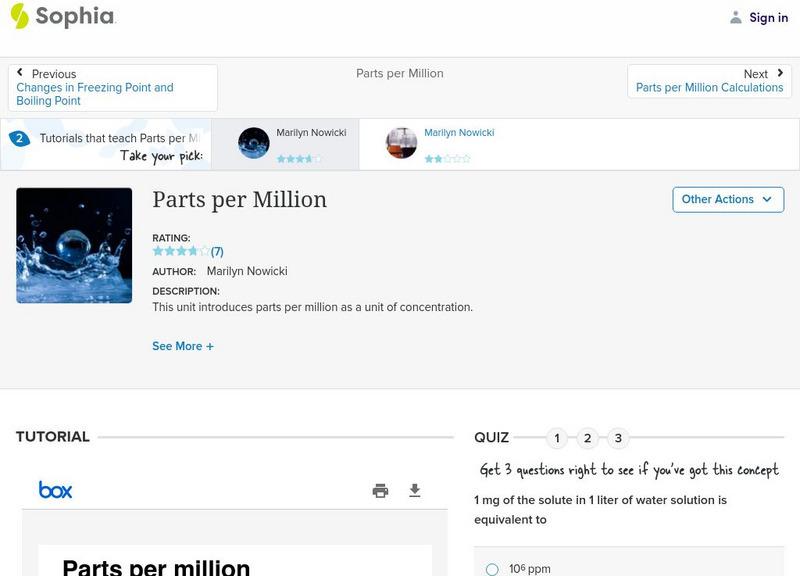Hi, what do you want to do?
Illustrative Mathematics
Crude Oil and Gas Mileage
Here is an activity that presents a real-world problem about the relationship between crude oil production and the gas mileage of modern automobiles. After learners write functions to describe the relationships, they are asked to...
Curated OER
Scale Model of the Solar System
Young scientists gain a better understanding of space, the solar system and its vastness by creating a scale model. Students first need to calculate the distance between each of the nine planets according to the size of their scale. This...
National Association of Teacher Educators for Family and Consumer Science
Consumerism in the Classroom: Effective Strategies for Today's Teenage Consumers
Help class members become savvy consumers with a series of activities that has them analyzing marketing strategies, comparing the value of brand name versus off-brand clothing, and considering the advantages and...
Curated OER
Recycling-Taking it Easy on the Environment
Students review the garbage/landfill graphs included with the lesson. They discuss the information on the graphs and discuss which garbage products come from their homes. Students collect examples of over packaging to share with class...
Curated OER
Water Studies: Precipitation and Population
In this water worksheet, students complete the chart about precipitation and population and answer short answer questions. Students complete 14 rows in the chart and answer 4 questions.
Curated OER
FOREST GRUMP: Examining How Deforestation Affects Plants and Animals of the Canadian Boreal
Students consider definition of an ecosystem as it relates to the Canadian boreal, discover how deforestation affects this forest and recreate ecosystems. They write persuasive letters urging politicians or business people to help save...
Curated OER
Breaking News English: Waterproof Genetically-Modified Rice
In this waterproof genetically modified rice worksheet, students read the article, answer true and false questions, complete synonym matching, complete phrase matching, complete a gap fill, answer short answer questions, answer...
Curated OER
Determining the Age of Fossils
Students examine the concept of radioactive dating. In this radioactive dating lesson plan, students investigate how to determine the ages of fossils and rocks as they learn about half-life radioactive decay.
Curated OER
Bill Nye- The Atmosphere
In this science worksheet, students look for the words that fill the blanks to cover the concept of the atmosphere. The activity is meant to be a review.
Curated OER
Land Leases
In this environment activity, high schoolers look for the answers to a problem. They read the article and then work in teams to analyze and make an informed decision.
Curated OER
Death of the Dinosaurs
In this reading comprehension instructional activity, students read a 6-paragraph article regarding dinosaur extinction and respond to 5 short answer questions. Vocabulary words and definitions are included.
Curated OER
Most Troublesome Exotic Invasive Plant Species Web Quest
Young scholars participate in a Web Quest activity in which they identify common exotic invasive plant species of the Southern Appalachian Region. After identifying the top 10 exotic invasive species, they choose one to research in depth.
Curated OER
Population Growth
High schoolers investigate the biodiversity of living things and how they are interdependent upon each other. They conduct research using a variety of resources. Specifically students create a graph to show how a population can grow in...
Curated OER
Breaking News English: Scientists Discover Gene to Waterproof Rice
In this English worksheet, students read "Scientists Discover Gene to Waterproof Rice," and then respond to 47 fill in the blank, 7 short answer, 20 matching, and 8 true or false questions about the selection.
Curated OER
If I Can't See It, How Do I Know It's There?
Students build a model ocean using a variety of materials representing the various levels of the ocean. They collect data about the ocean floor in a partner activity. They practice working with topographical mapping grids.
Curated OER
Catch As Catch Can
Students capture and observe insects. Using provided netting, students design and create a butterfly net. They study many types of insects and their benefits. After identifying insects caught, students complete a graph. Students write...
Curated OER
Volcanoes: Mount Vesuvius
Students explain how volcanoes form. In this earth science lesson plan, students identify the different types of volcanoes. They create brochures about Mt. Vesuvius before and after the eruption.
Curated OER
Catch as Catch Can
Students investigate insects. In this insect analysis lesson, students catch insects using nets they make. They identify the insects they catch and create a chart to show the numbers and varieties. This lesson includes a vocabulary list...
Other
Oregon State University: Parts Per Million
This site gives a good comparison of parts per million, as well as conversions.
Sophia Learning
Sophia: Parts Per Million: Lesson 3
This unit introduces parts per million as a unit of concentration. This lesson is 3 of 3 in the series titled "Parts per Million."
Sophia Learning
Sophia: Parts Per Million Calculations
Learn how to figure parts per million calculations in this short, guided lesson.
TED Talks
Ted: Ted Ed: How to Visualize One Part Per Million
Parts per million is a scientific unit of measurement that counts the number of units of one substance per one million units of another. But because it's hard to conceptualize really large numbers, it can be difficult to wrap our brains...
Sophia Learning
Sophia: Parts Per Million: Lesson 1
This unit introduces parts per million as a unit of concentration. This lesson is 1 of 3 in the series titled "Parts per Million."
Texas A&M University
Calculating Parts Per Million
Calculating parts per million for use in greenhouses.




























